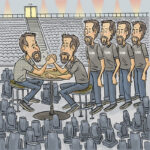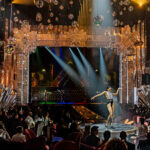Most producers think that once the show is programmed that changing the lighting fixtures will have a very minimal effect. Of course, most designers and programmers know that this is far from true. When programming a show file that could require a change of fixture types, understand that most lighting consoles tie the programming data to the fixture instance and not its unique DMX patch information. This means that the fixtures hold the data regardless of how they are patched. With this information, you can rest assured that changing or copying from the instances will move your programmed data and that you can re-patch as needed. Also be sure to make use of palettes/presets. With palettes used in your programming, you can easily update the parameter values of changed fixtures. This is particularly important for values that pertain to specific fixtures such as gobo rotation speeds, strobe speeds and edge focus. Many of today’s consoles have routines to assist in changing the data from one fixture type to another. This is accomplished through the use of a unified library model. A unified library model presents the programmer with the same method to select a gobo and set its rotation mode and speed while never revealing the DMX work required to achieve it. In this manner, the data is stored that states “fixture five, gobo three, rotate clockwise 16 RPM.” Now if you want to change to a different fixture, you can easily do so, and it will utilize the same programmed data. Somewhere in the console the specific DMX values output to the fixtures to accomplish gobo selection and rotation will change. The programmer never has to be aware of the DMX mapping requirements for each fixture type.
—From “Feeding the Machines” by Brad Schiller, PLSN, Aug. 2014


